Every Living Animal Owes its Life to Intestinal Microbiota?
The Adventures of a Biochemist Nicknamed “The Poop Hunter”

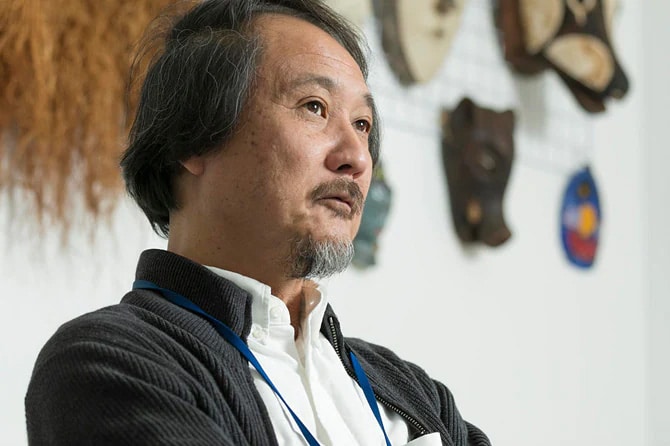
Series: MOMENTUM
Also known as “The Poop Hunter,” Professor Kazunari Ushida of the Academy of Emerging Science at Chubu University ventures deep into nature in search of fresh animal droppings to clarify the relationship between animals and their intestinal microbiota. With an ice ax in his right hand and a pipette in his left, he is unique in the research community.
Ptarmigans with Lifestyle Disease
Intestinal microbiota plays a role comparable to that of an internal organ such as the liver, and without them, we could not live. “A living animal free from bacteria is inconceivable in nature,” points out Professor Kazunari Ushida of the Academy of Emerging Science at Chubu University. In an effort to understand the relationship between microorganisms and animals, he roams everywhere from African rain forests to Himalayan glaciers collecting samples of feces, blood, and bacteria from animals.
Long before the “healthy gut” fad of recent years, intestinal microbiota has played an important role in animals. Hundreds of millions of years ago, microorganisms first made their way into animal bodies and discovered how to take in nutrients. At the same time, through evolutionary trial and error, animals developed ways to survive, and natural selection led them to become partners with microorganisms.
The professor’s focus in recent years has been Japanese rock ptarmigans, a type of grouse designated as a special natural treasure in Japan. They are listed as an endangered species and, for this reason, initiatives such as artificial breeding and release into the wild have been hurriedly adopted, but without much success. Professor Ushida suggests that intestinal microbiota may be one reason for this.
“When the components in feces are comprehensively examined, large differences are noted between ptarmigans raised in the wild and those bred in captivity”.
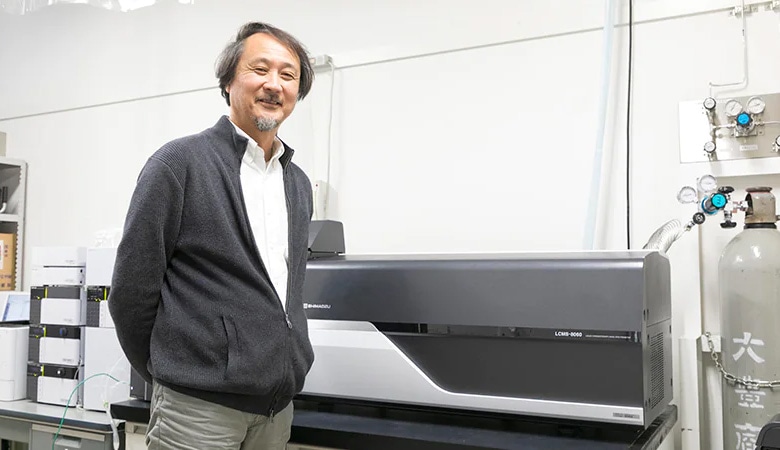
Samples of feces collected from zoos and alpine regions were analyzed using a Shimadzu high performance liquid chromatograph mass spectrometer (LC-MS). From the results, it is evident that there are a number of isolated amino acids in the feces from the ptarmigans bred in captivity. Large levels of free amino acids imply that an excess of protein is being ingested. If the protein levels remain too high, this tends to impact the liver and kidneys.
In contrast, in the samples from the wild species, large amounts of intermediate products from nucleic acid metabolism are evident. This occurs when bacteria die and decompose, a phenomenon commonly seen in the gastrointestinal tracts of herbivores. Since intermediate metabolic products are numerous, this suggests that the metabolic system used to synthesize amino acids from these intermediate products should work in ptarmigans.
“The ptarmigan has found a method of surviving on the nutrient-poor plants in alpine regions through cooperation with intestinal microbiota. However, the people who are breeding them are unaware of the amounts of nutrients required by the birds in the wild and are inadvertently giving them too much. The animals bred in zoos often die earlier than animals living in the wild. This is because the overfeeding of nutrient-rich feed develops “lifestyle diseases” in animals under captivity.”
How do ptarmigans survive in alpine regions?
That is another difficult issue. The alpine vegetation that nourishes the ptarmigans contains substances that are often toxic to other animals. The ptarmigan gut harbors microorganisms that detoxify these toxic substances. The intestinal microbiota is passed on to the chicks when they peck at their hens’ feces shortly after hatching. This is part of the unbroken chain of life.
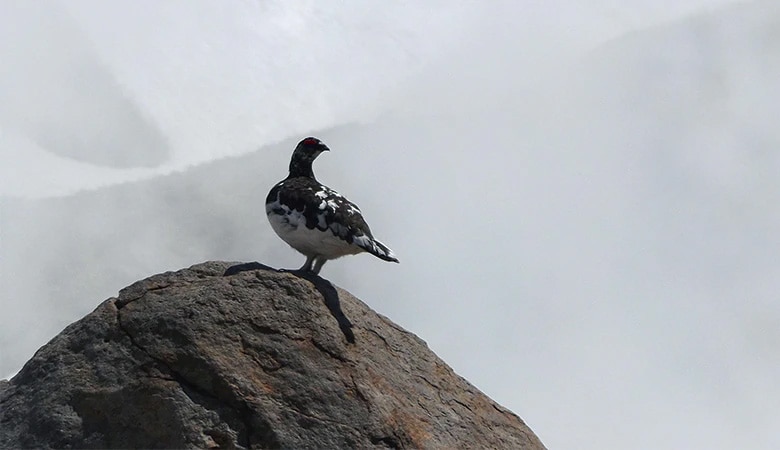
Male guarding its territory amidst volcanic sulfurous smoke on the Jigokudani Ridge at the Murodo-daira, June 2016 (Photo courtesy of Professor Ushida)
However, reproducing this behavior in zoos is difficult. There is a risk of feces from wild ptarmigans containing parasites, so incorporating it into breeding practices in zoos is basically not permitted. Even if the parasites were removed, and the chicks could ingest the feces from the wild species, unless they subsequently continued to ingest the alpine vegetation, the intestinal microbiota would eventually be replaced with something completely different.
However, this does not mean that we should harvest the precious alpine plants from the mountains. Doing so would ruin the alpine flora and make it impossible to sustain the wild ptarmigans.
“First, we need to start by understanding what is required to digest and absorb what the birds actually eat. Then we isolate the responsible intestinal bacteria from fresh feces in the wild, examine their respective functions, and continue to stock them. It is conceivable that in the future, we could adjust the birds’ enteric environment before returning them to the wild.”
Can ptarmigans be rescued from the brink of extinction? That may soon be possible thanks to research by Professor Ushida’s team.
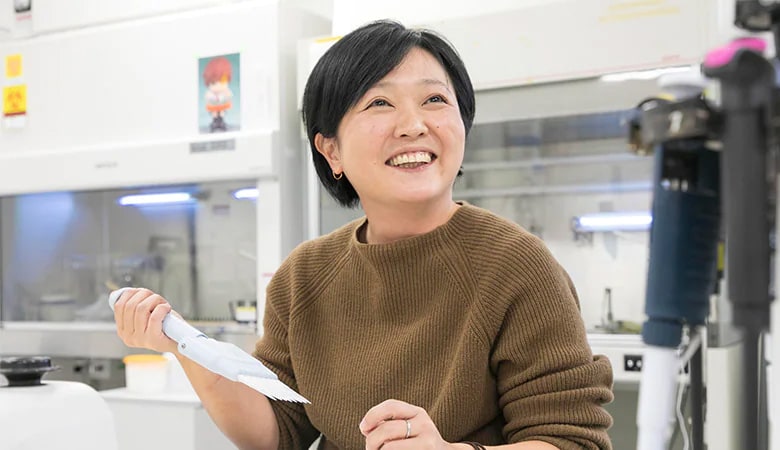
Shimadzu helmet mounted display equipped on the JAXA research helicopter
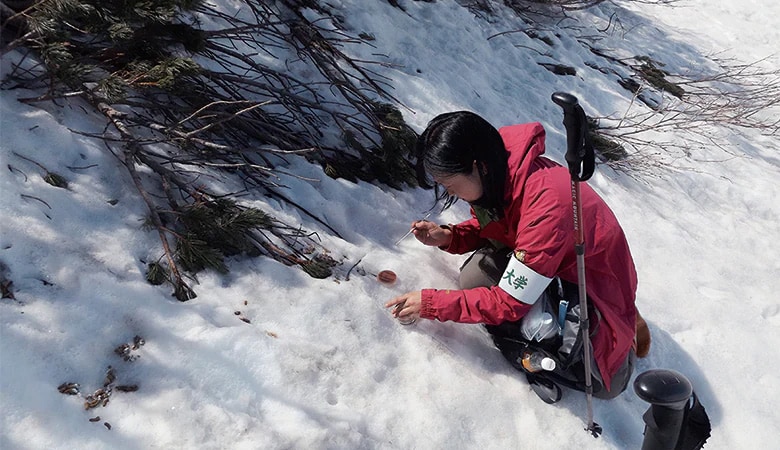
Dr. Sayaka Tsuchida applying cecal feces from a Japanese rock ptarmigan to a culture medium. Murodo-daira still in snow, June 2017 (Photo courtesy of Professor Ushida)
“The Poop Hunter”
When Professor Ushida was in elementary school, he had a passion for African adventure tales. Stories about adventurers forging a path through the jungle and encountering native peoples with their unique livelihoods particularly fired his imagination. In high school and university, he joined the mountaineering clubs. When he became a researcher, he took an interest in the differences between domesticated and wild animals and kept making comparisons of blood components.
Professor Ushida, who was confident of his physical strength, set out across the globe, gathering samples, and even performing biochemical analyses himself with the help of analytical instruments. It was not something that anyone could easily imitate.
In the 1990s, he began collaborative research with food companies, focusing on his interest in intestinal microbiota. Professor Ushida noted that while there was much interest in adjusting the enteric environment, his interest lay in understanding that environment in other animals. So, around the year 2000, he began to study the feces of monkeys and chimpanzees.
However, the droppings from animals in zoos contain Lactobacillus from the food given by people, which was not useful at all. Some ethology researchers had brought back samples of the food and feces of chimpanzees and gorillas from Africa. However, their collection and transport methods were problematic and these, too, were not particularly useful. As a result, he decided that there was no choice but to make the trip himself, and without delay, he took off for Africa.
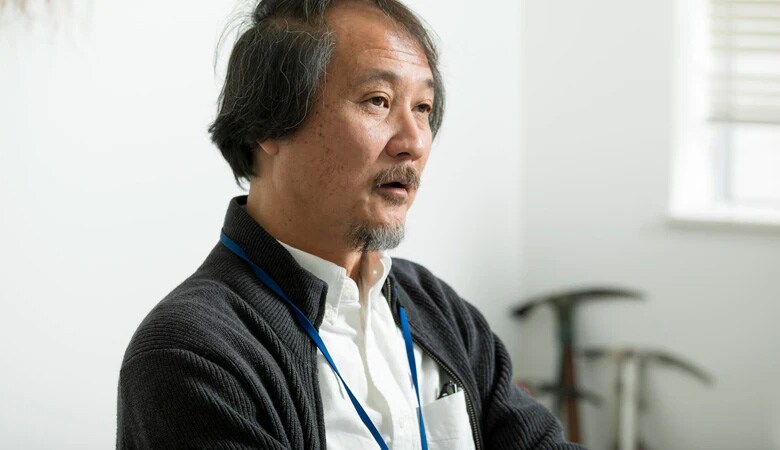
The process of collecting gorilla droppings was just like hunting. In the early morning, he would stake out the animal trail, single out a particular animal, and go in pursuit. When a gorilla defecated, he would immediately approach after gorilla moved out, and place a sample in a container, being careful to avoid contamination with other microorganisms. The longer it was in contact with air, the more microbes would die, so he would make his way as quickly as possible back to the base camp. However, this was deep in the rain forest where decent equipment was nowhere to be found, so everything relied on his ingenuity and creativity. This was indeed the type of adventure story he had read as a child.
“My methods were primitive, probably just like those used when molecular biology first began, but such contrivances are the very epitome of this research,” he joked.
In Japan, he had an even harder time collecting ptarmigan droppings. It took a minimum of 6 hours to get the summit from the foot of Mt. Kitadake (3192 m, the second highest mountain in Japan) in the Japanese southern alps. During that time, the samples needed to be transported at minus 80 degrees to avoid components deteriorating due to the heat.
Accordingly, he carried carbon dioxide cylinders from the start of the trail up to the summit and created dry ice on-site. On receiving the ice-cold samples, the Shimadzu analytical technicians could only stare in amazement.
“In the field, it was up to me to do it all myself, because nobody else would,” explained the professor, while repairing the air conditioner in the laboratory.
This year’s fieldwork began again in May in the snowy valleys of Mt. Kitadake as the rain fell.
Reference
Professor Ushida’s ResearchGate page: https://www.researchgate.net/profile/Kazunari_Ushida
* This article is an English translation of our article originally published on the website “Boomerang”. The information, including affiliates and titles of the persons in this article, are current as of the time of interviewing.
 Copied
Copied

